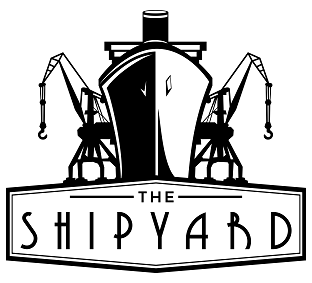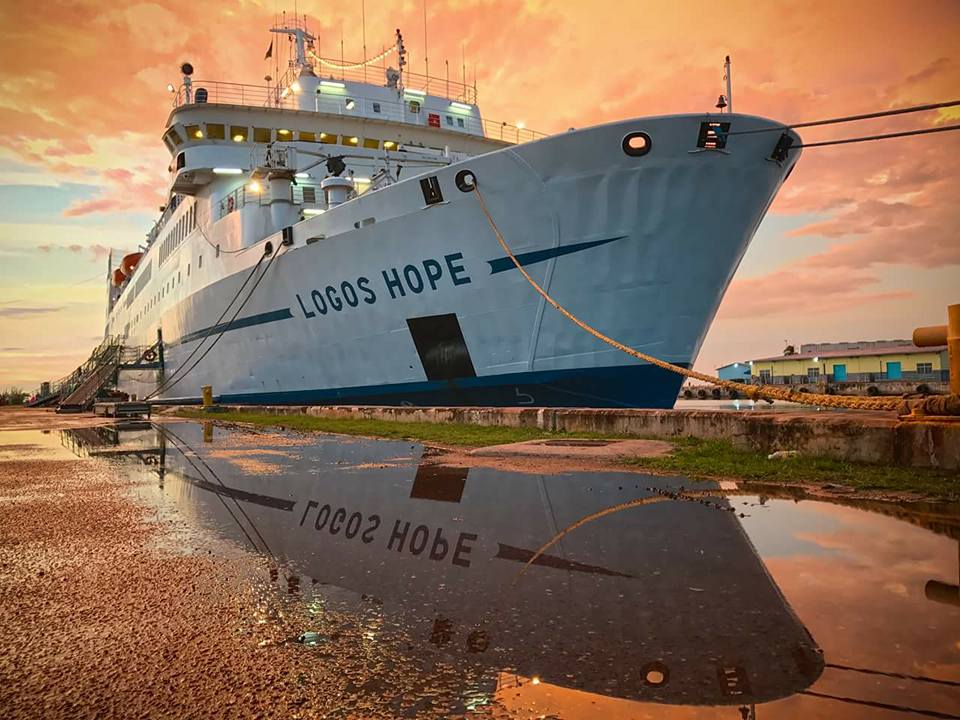As the oceans get busier by the day, there seems to be no limit to what can be floated on the water – nuclear power stations, golf courses, fish farms, even prisons. Inexpensive shipbuilding and the abundance of aging vessels propel the imagination of enterprising individuals to new levels, prompting them to devise applications beyond our wildest fantasies. One such idea is the floating bookfair, a fascinating fleet of ocean-going passenger ships, navigating the seas since 1970 to share knowledge with underprivileged communities across the globe. With the launch of their latest vessel MS Doulos Hope, GBA Shipping (the charity organization behind the idea) can now reach the most neglected coastal areas in the world, offering a variety of books to isolated communities.
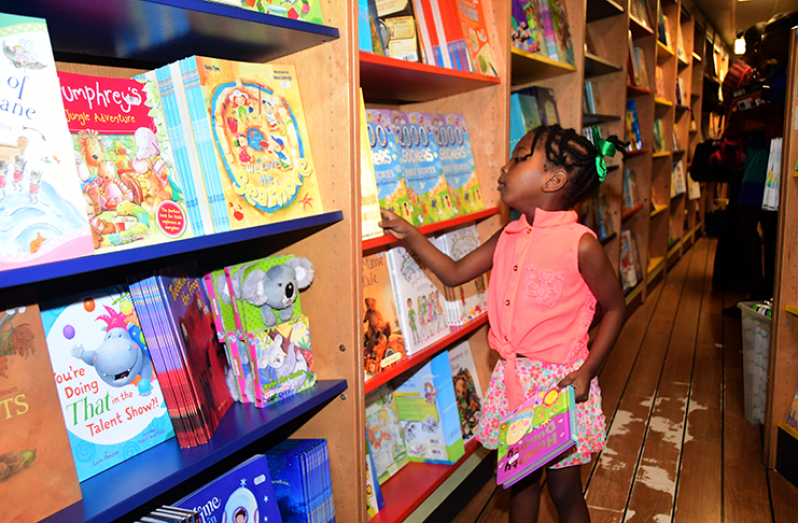
Logos the First
The decade following WWII was the heyday of Danish shipyard Helsingör Vaerft, with Marshall Plan millions flowing in and numerous new ships floating out. Amidst the manufacturing frenzy, no one paid attention to the 83-meter Hull 290 that quietly slid down the slipways in 1949 to become the Umanak, a humble workhorse for Royal Greenland.
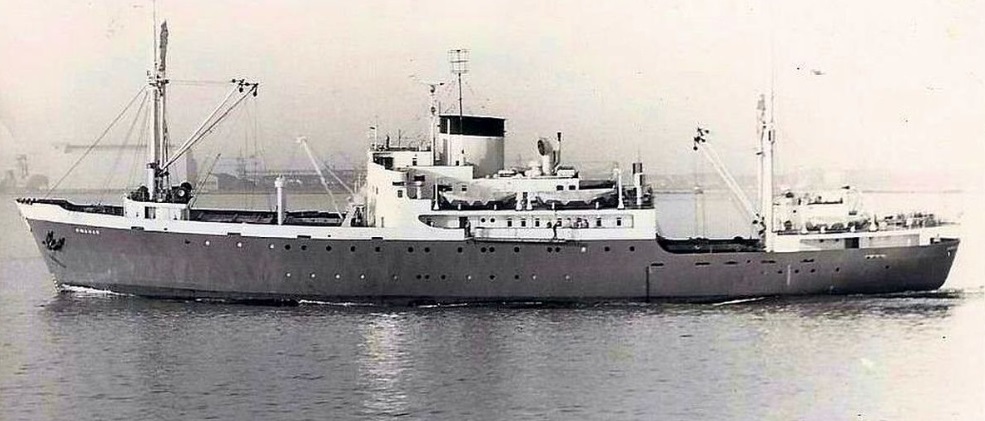
After a 20-year spell between Denmark and Greenland, German charity organization Gute Bücher für Alle (GBA) bought the vessel and renamed her Logos. In the winter of 1971, after an extensive renovation, the Logos embarked as the first ever floating bookfair. The timing was not coincidental – a decade of reckless decolonization had produced numerous war-torn and impoverished young nations. Some of them were courted by the great powers for their strategic location or natural resources, but many were left to fend for themselves, struggling to educate and emancipate an unsettled population. In this troubled world, the scrawny, humble Logos gave the mighty ocean liners a run for their money: 255 ports reached in 108 countries, 408 total ports of call, and over 6.5 million visitors.
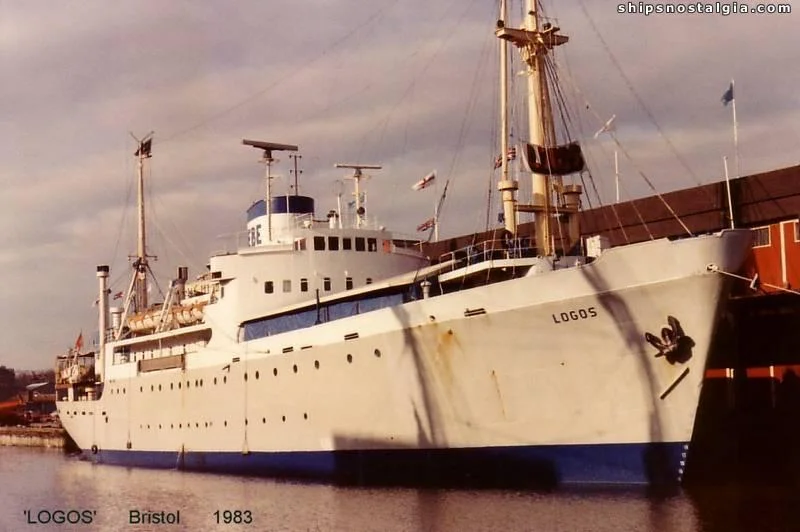
Doulos the Great
Upon her retirement in 2009, the original MV Doulos was not only the most unconventional bookstore around but also the world’s oldest ocean-going passenger ship in operation. Built in 1913 by the illustrious Newport News shipyard, the 130-meter SS Medina was hailed by International Marine Engineering as one of the most advanced cargo vessels on the Atlantic. With a 4,100-hp triple-expansion steam engine, four coal-fired boilers, and maximum speed of 14 knots, she joined the ranks of the Mallory Line, hauling onions along the East Coast, from New York to Galveston.
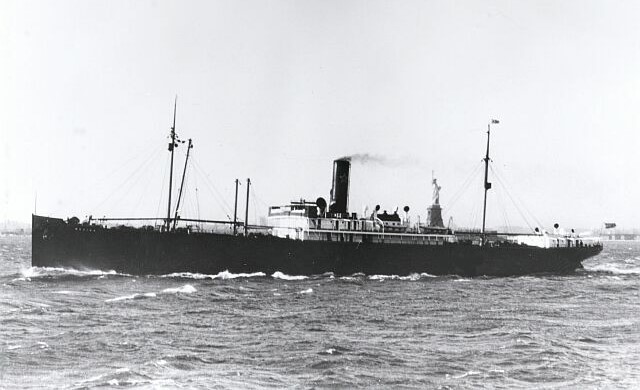
Before she could get accustomed to the pungent odors of her cargo, however, the Great War broke out, and Medina joined scores of other acquisitioned vessels in the notorious Atlantic convoys. When the war ended, the veteran freighter got new oil-burning boilers and sailed under charter for the Cuba Mail Line to Havana and Nassau. After another stint as a supply ship in WWII, she was showing early signs of aging, but like so many other ships, her epic years were still to come.
When the Italian company Genaviter bought the Medina in 1948 to convert her into a luxury ocean liner, many sneered and shook their heads at the preposterous idea. How could an old cargo tub compete with the likes of Queen Elizabeth or Italy’s very own Andrea Doria? In 1950, however, Pope Pius XII announced a holy year for Catholics around the world, offering indulgences to all pilgrims arriving in Rome to repent for their sins. Expecting at least a million devotees to make the journey, the Vatican’s own travel agency chartered seven ships to haul the devout multitudes across the Atlantic. One of those vessels was SS Roma, formerly Medina. All became clear. No one laughed any more.
With that lucrative job completed, the faithful old lady once again awaited a retirement that was just not meant to be. In February 1953, a modest little vessel debuted in the Caribbean, donning a certain yellow funnel with the letter C on it. That is correct, funky old Medina was now a Costa cruise ship. With a new diesel engine, air-conditioning, and numerous improvements to the interior, the “new” Costa Franca C carried wealthy Italians to the tropical ports of America, all the way until 1977. Time to send her to the scrapyard, many said again with concern in their faces, but the 63-year-old riveted relic was exactly what GBA Shipping was shopping around for.
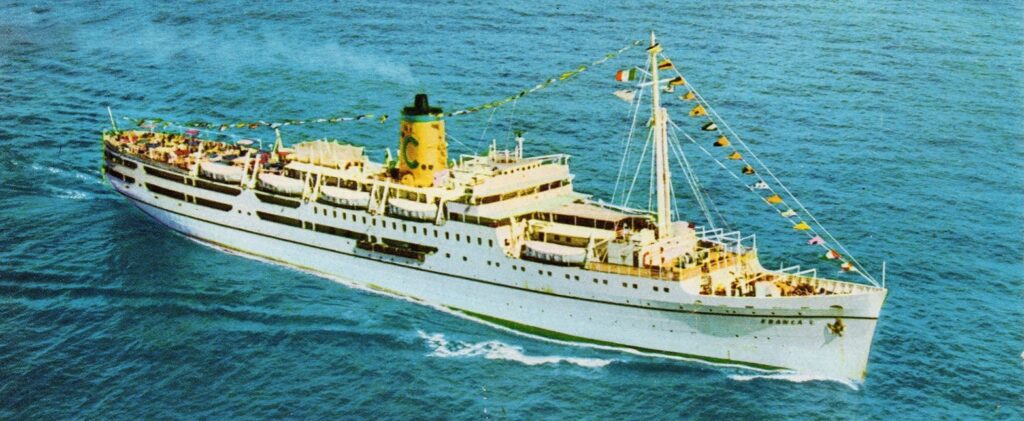
A group of GBA representatives had sailed on Franca C’s final voyage before decommissioning, and, to everyone’s surprise, the charity made a last-minute offer to purchase the ship from Costa. A million dollars changed hands, and her casinos, bars, and luxury staterooms were replaced with a library, bookstore, and classrooms for fledgling missionaries. The legend sailed on as MV Doulos.
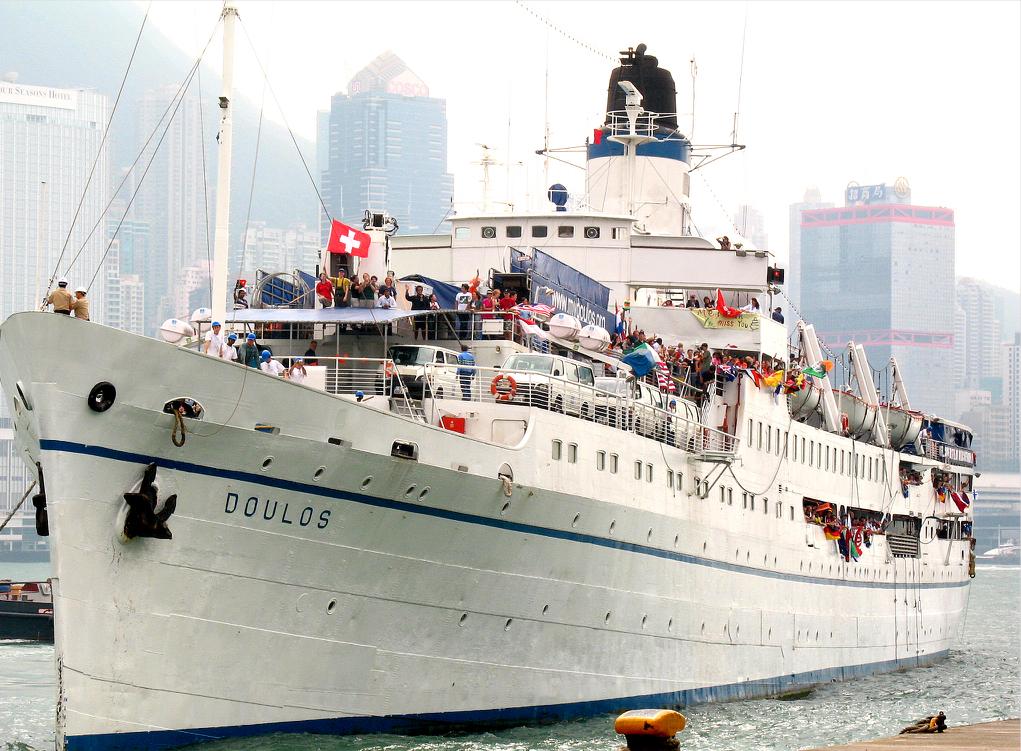
In this noble capacity, the eminent Doulos celebrated her 90th anniversary in 2004, looking forward to a grand centennial in 2014. After all, inspections showed that the riveted hull was rock-solid, while the electrical and navigation systems were up to modern standards. The 2010 SOLAS regulations, however, demanded the removal of tons of combustible materials, which would have costed more than the vessel herself. Once again, the owners condemned her to the shipbreakers, this time for real…
Or was it? At the time of writing, thousands of visitors still board the Doulos every year, now revamped as a luxury ship hotel on the Indonesian island of Bintan. And much like Benjamin Button, she looks younger than when she came into the world 111 years ago.
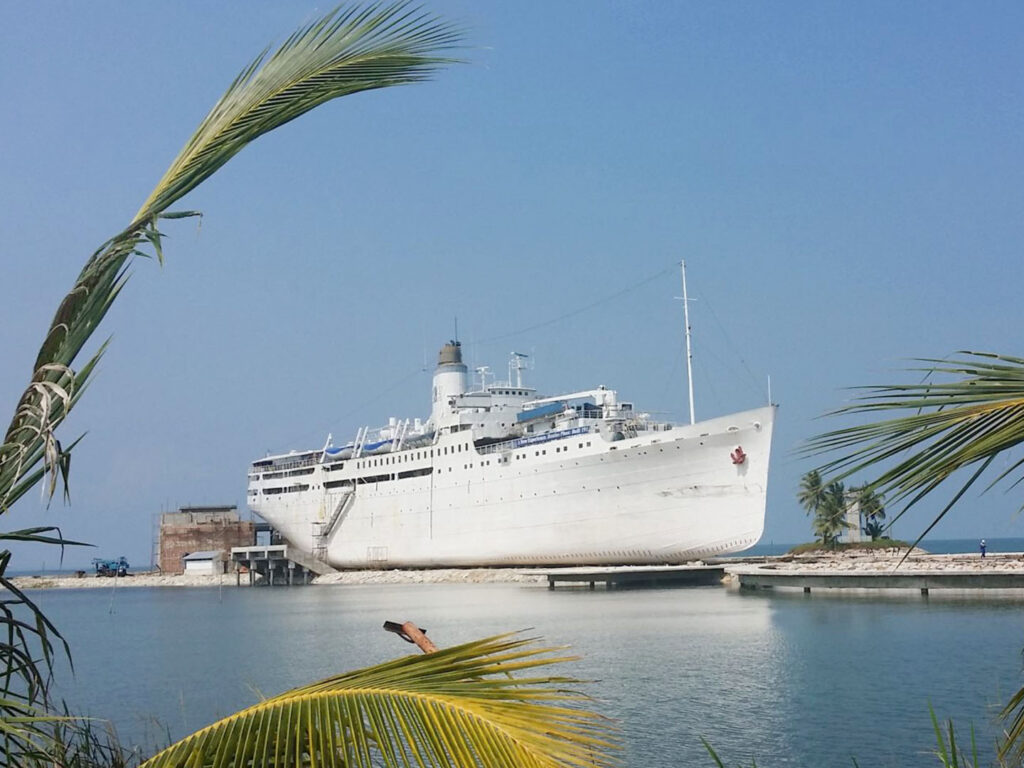
The New Wave
Building on this impressive track record, GBA now owns and operates two vessels – Logos Hope and Doulos Hope. The Logos Hope first sailed in 1973 for the Öresundsbolaget Line as MV Gustav Vasa. After the usual changes of ownership, names, and twenty years of plying the remote lanes between Iceland and the Faroe Islands, GBA bought her in 2004 for the usual extensive refurbishment as a floating book fair.
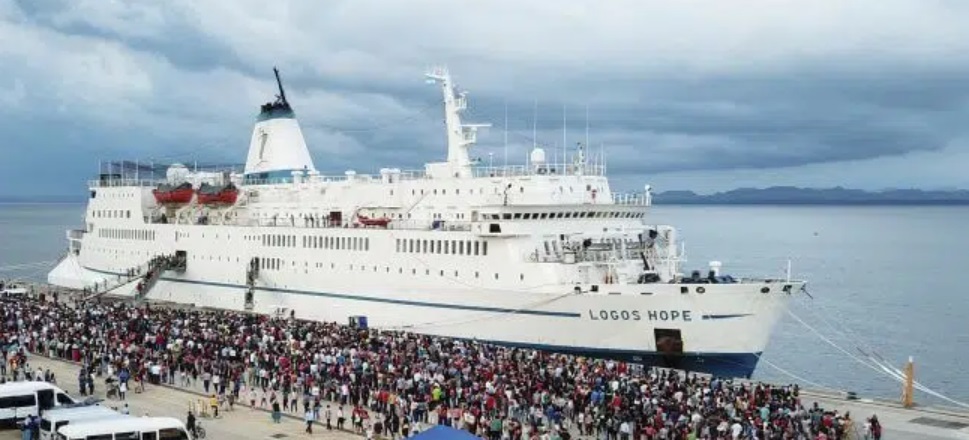
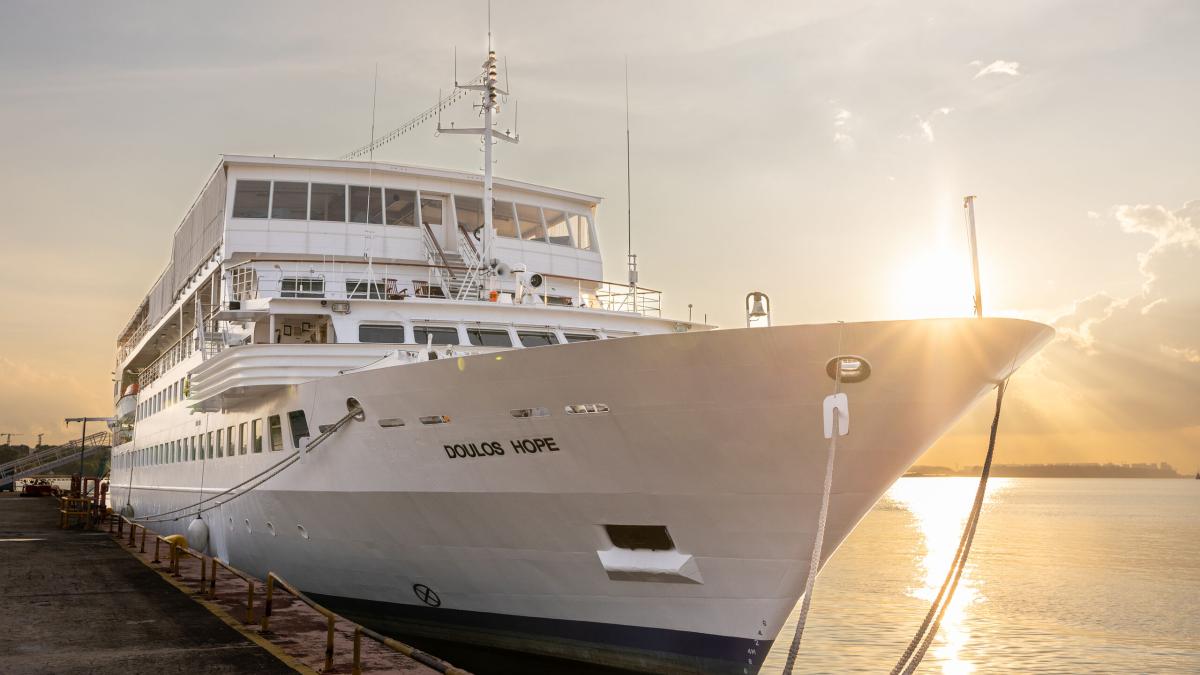
Eighteen years later, the organization acquired a former luxury cruise ship as the latest and most interesting addition to the fleet. The ambitiously named Doulos Hope had served more than 20 years in the fleet of Hong Kong’s Star Cruises. Looking more like a superyacht than a ship, the former MV Taipan has a smaller draft, which would allow the charity to reach shallow ports and bring books to those who crave to read them.
The Shipyard
